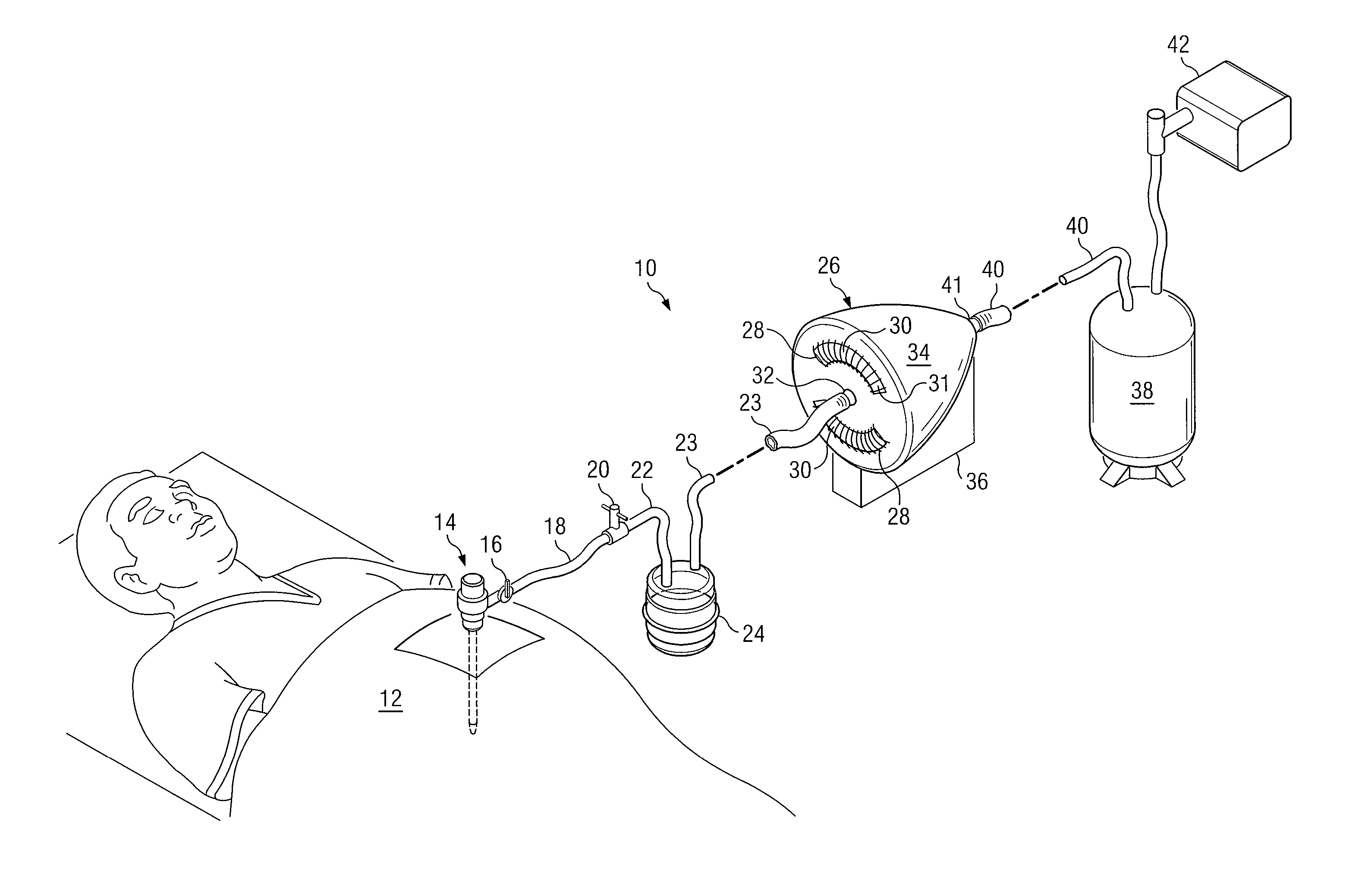System and method to vent gas from a body cavity
a body cavity and gas venting technology, applied in the field of endoscopic surgery, can solve the problems of toxic chemicals, negative consequences for the patient and/or the operating room staff, and often generated smoke, so as to reduce the likelihood of any smoke, reduce the likelihood of suction source, and improve patient safety
- Summary
- Abstract
- Description
- Claims
- Application Information
AI Technical Summary
Benefits of technology
Problems solved by technology
Method used
Image
Examples
Embodiment Construction
[0008]The preferred embodiment of the invention and its advantages are best understood by referring to FIG. 1 of the drawings. The embodiment described herein is only one embodiment of the invention and various substitutions and alterations can be made without departing from the scope of the invention.
[0009]In some forms of endoscopic surgery (mainly thoracoscopy and laparoscopy, a trocar is used to provide access to a body cavity. Many trocars have a gas conduit in fluid communication with the body cavity that may be used to allow gas to escape from the body cavity. The invention may be used to vent gas from either the thoracic cavity or the peritoneal cavity during an endoscopic procedure. For purposes of this patent, the term “body cavity” refers to either the thoracic cavity or the peritoneal cavity.
[0010]FIG. 1 illustrates one embodiment of a system 10 for venting gas from a body cavity during an endoscopic procedure. In the embodiment illustrated in FIG. 1, system 10 comprises...
PUM
 Login to View More
Login to View More Abstract
Description
Claims
Application Information
 Login to View More
Login to View More - R&D
- Intellectual Property
- Life Sciences
- Materials
- Tech Scout
- Unparalleled Data Quality
- Higher Quality Content
- 60% Fewer Hallucinations
Browse by: Latest US Patents, China's latest patents, Technical Efficacy Thesaurus, Application Domain, Technology Topic, Popular Technical Reports.
© 2025 PatSnap. All rights reserved.Legal|Privacy policy|Modern Slavery Act Transparency Statement|Sitemap|About US| Contact US: help@patsnap.com


